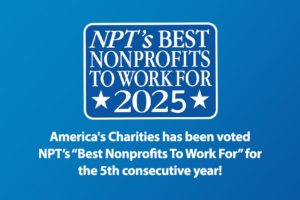Sarah Ford | March 11, 2014
Living for the Future: National Women & Girls HIV/AIDS Awareness Day
By Olamide Lyanda
In 2012, during my junior year of college, word leaked that two female students had contracted human immunodeficiency virus (HIV) from the same guy during unprotected sex. Being that it was a small school, it didn’t take long before everyone knew about it. The two girls eventually withdrew from school due to the public humiliation. I quickly approached my roommate to tell her the big scandal on campus. Her response revealed an even bigger scandal: “Welcome to Baltimore!” Huh? What exactly did that mean? Apparently, this was considered to be the norm around Baltimore City. Although Baltimore City accounted for 15% of the state of Maryland population, over 50% of the state’s HIV cases came from Baltimore City. Whoa! My mind started to race with questions I desired to ask of the three students. Did you not use protection? Did you talk about using protection? If you were using protection, what made you stop? Were you in an intimate relationship or was it no strings attached kind of sex?
As a 23 year old, I am a part of a generation where HIV/AIDS is a disease that has always existed. In this day and age, there are vast amounts of prevention and risk reduction programs and messages that didn’t exist 20 years ago. New research has developed since the HIV epidemic surfaced, yet despite all the new prevention and research being conducted, my generation somehow seems to be down playing the severity of contracting HIV from unprotected sex. When having unprotected sex, my generation has always had to consider the possibility of getting HIV on the list of concerns, along with unexpected pregnancy and STDs. However, the term HIV has lost the power to bring concern to those that are sexually active, as if it could be managed like a simple cold.
Despite that, not everyone is nonchalant about it. As soon as the three HIV cases were made known, I quickly urged my sexually active friends to get tested. It’s better to be safe than sorry. It seemed like I wasn’t the only one taking the matter seriously. Pretty soon, the school started to offer all students free HIV and sexually transmitted diseases (STD) screening throughout the days following. Even the campus organizations started to take the issue to heart by passing out condoms to students that lived on campus and urging people to get tested. According to Centers for Disease Control and Prevention (CDC), in 2011, out of 8,054 HIV infected Americans between the ages 20-24, 58% were African American. In that same study, out of 11,413 HIV infected women, 64% were African American.

Get Resources and Insights Straight To Your Inbox
Explore More Articles
For Fifth Consecutive Year America’s Charities Named ‘Best Nonprofit To Work For’
Washington, D.C. – April 1, 2025 – America’s Charities, the nonprofit that mobilizes the power of giving as a leading provider of volunteering, workplace giving,…
Read ArticleWorkplace Fundraising + Volunteering Summit (April 2nd and 3rd, 2025)
Join us in attending this virtual summit! The America’s Charities team is joining up with other leading voices in the workplace giving space for a…
Read ArticleThe Time to Act is Now
The results of the 2024 National Assessment of Educational Progress (NAEP) are in, and the findings are, in a word, heartbreaking. This assessment serves as…
Read ArticleGet Resources and Insights Straight To Your Inbox
Receive our monthly/bi-monthly newsletter filled with information about causes, nonprofit impact, and topics important for corporate social responsibility and employee engagement professionals, including disaster response, workplace giving, matching gifts, employee assistance funds, volunteering, scholarship award program management, grantmaking, and other philanthropic initiatives.




